The American shorthair cat has a short, dense coat and came to the U.S. aboard the Mayflower. With their affectionate nature, compact build, round faces, and short ears, American shorthairs make beautiful and loving pets.
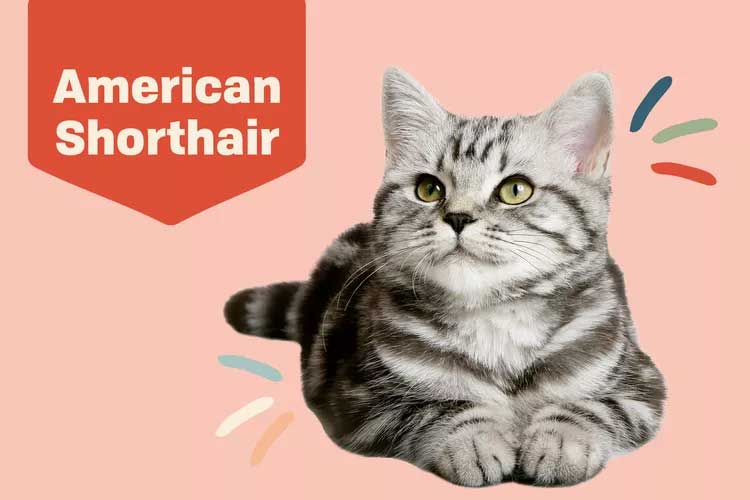
American Shorthair Overview
| OFFICIAL NAME | American Shorthair |
| COMMON NAME | American Shorthair |
| PET HEIGHT | 8 to 10 inches |
| PET WEIGHT | 10 to 15 pounds |
| LIFESPAN | 15 to 20 years |
| GOOD WITH | cats, children, dogs, families, seniors |
| TEMPERAMENT | affectionate, bold, sociable |
| INTELLIGENCE | high |
| SHEDDING AMOUNT | normal |
| PLAYFULNESS | medium |
| ENERGY LEVEL | active |
| VOCAL LEVEL | when necessary |
| COAT LENGTH | short |
| COLORS | black / ebony, blue / gray, chocolate / brown / sable, cream / beige / tan, red / orange, white |
| OTHER TRAITS | easy to groom, easy to train, friendly toward humans, friendly toward other pets, friendly toward strangers, good for first-time pet owners, good lap cat, high prey drive, strong loyalty tendencies, tolerates being alone, tolerates being picked up |
The direct descendants of European cats brought to the U.S. in the early 1600s, the American shorthair was originally prized for his uncanny ability to protect the grain harvests from rats and mice. People selected and bred these cats purely on their hunting ability. But, over time, their compact athletic bodies and boldly colored dense coats started to attract attention from pet-lovers. And, because these animals were also so intelligent and affectionate, they quickly caught hold with the American public, who began to invite them into their homes.
American shorthairs are a breed that requires little maintenance to keep their dense coat glistening. If you're looking for a new family cat, or simply want to learn more about this breed, here's everything you need to know about the American shorthair.
Appearance
The phrase that "form follows function" was never truer than it is with the American shorthair breed. That's because this gorgeous and athletic cat was shaped and designed to be the ultimate in pest control. With a broad chest, well-muscled body, strong jaws, and thick neck, the American shorthair is the quintessential example of feline beauty.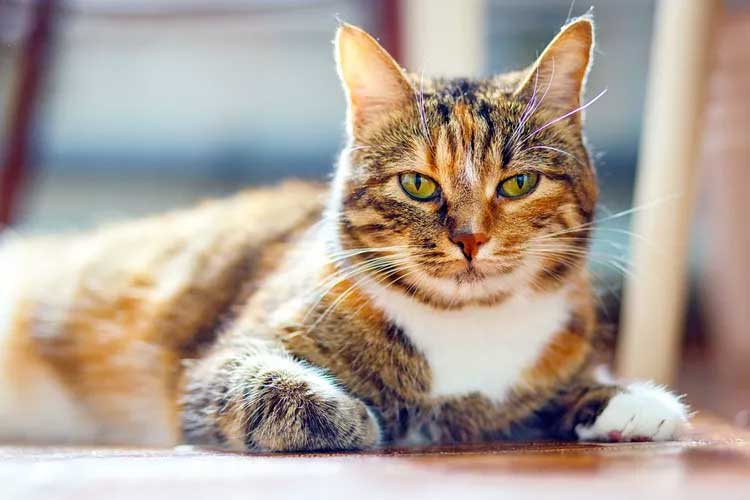
American shorthairs are a medium- to large-sized cat breed with a thick, dense coat that has a tendency to thicken during the winter months but only requires minimal grooming. American shorthair colors include white, blue, black, cream, red, silver, golden, cameo (a white base with red tips), and chinchilla (white root with dark tips). Patterns can be calico, solid, bicolor, tabby, smoke, tortoiseshell, and shaded. Despite this extensive selection, brown tabby and silver tabby are the most common—and treasured—color patterns.
Eye color can vary with coat color, but includes green, blue, copper, gold, hazel, or odd-eyed (where each eye is a different color). Unlike his close relative, the domestic shorthair, which comes in a variety of styles and body types, the purebred American shorthair cats all have a similar build.
Temperament
While the American shorthair might look like the common domestic shorthair, the two aren't interchangeable. The domestic shorthair is a mixed breed cat and, because of this, his temperament can vary wildly, says Alison Gerken, DVM, clinical behavioral medicine resident at Florida Veterinary Behavior Service."The American shorthair cat's personality tends to be more reliable—they are friendly and affectionate," she says.
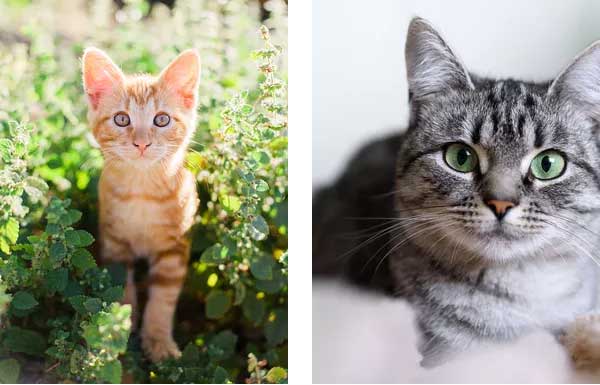
For a cat breed that was originally developed only to hunt rats and mice, American shorthairs have an amazingly sweet and affectionate personality. They love to be around their family and are even fine being carried about by younger humans. American shorthair cats are known for being easygoing and docile, yet curious enough to make an entertaining companion.
"Because of their adaptability, patience, and tolerance, they can do well with children, other cats, and dogs, as long as they are properly introduced," Gerken says. "However, it is important to keep in mind that every animal has their own individual likes and dislikes."
American shorthairs love attention, but aren't demanding about it and are generally pretty quiet. Gerken says that, despite being social kitties, they can also have an independent streak and "don't insist on constant attention."
Living Needs
The American shorthair is a versatile breed, ready and willing to live anywhere, Gerken says. After all, they started out living on ships and farms, so any comfortable apartment or home will be just fine with them."Being highly adaptable, a potential pet parent can expect an American shorthair to fit into their home," Gerken says. "American shorthair cats can thrive in homes with seniors, singles, children, or other pets."
Because of their generations working as ratters, American shorthairs are excellent hunters and still maintain a high prey drive. They are an intelligent breed that enjoys interactive games as well as traditional cat toys such as felt mice, plastic balls, and fishing teasers.
"They usually enjoy interactive toys, including toys that fly and flutter, as well as food puzzles," Gerken says. "They should be provided at least twice daily 10–15 minutes play sessions, and toys can be rotated every three to five days to provide them novelty."
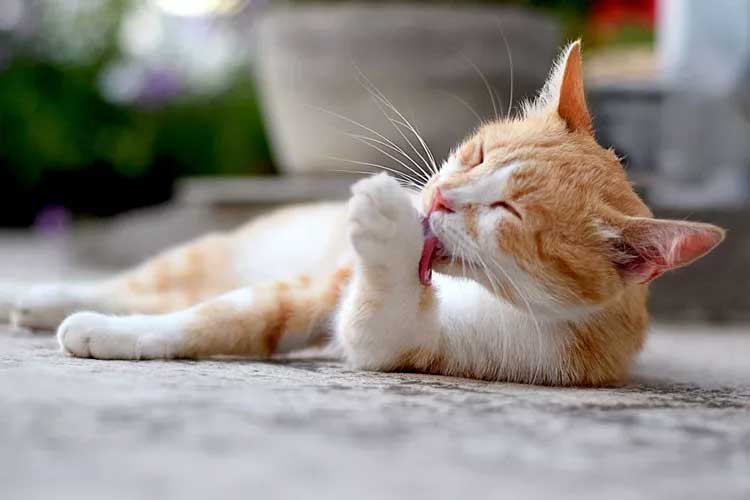
Like other breeds, the American shorthair will enjoy climbing on a cat tree or sunning on a padded shelf by a bright window. Yet, when he's not off exploring, an American shorthair will be just as happy taking a cat nap on your bed or lap.
An American shorthair is fine being left on his own, as long as he gets lots of scritches when you get home. But he's quite social and, when you have friends over, he'll roam around happily like he owns the place. (Let's face it—all cats "own" the places they live).
Care
Just because the American shorthair has a short, dense coat doesn't mean you can skip on grooming. A weekly brushing, especially when your kitty is shedding his winter coat, will eliminate dead hair, dirt, and any potential mats. These cats have thicker seasonal coats.Ingrid Johnson, Certified Cat Behavior Consultant, cat groomer, and author of Fundamentally Feline uses a special brushing technique for American shorthairs.
"[For this breed], I comb quite vigorously," she says. "Then I comb backwards to agitate the coat; it gets out a lot of the coat."
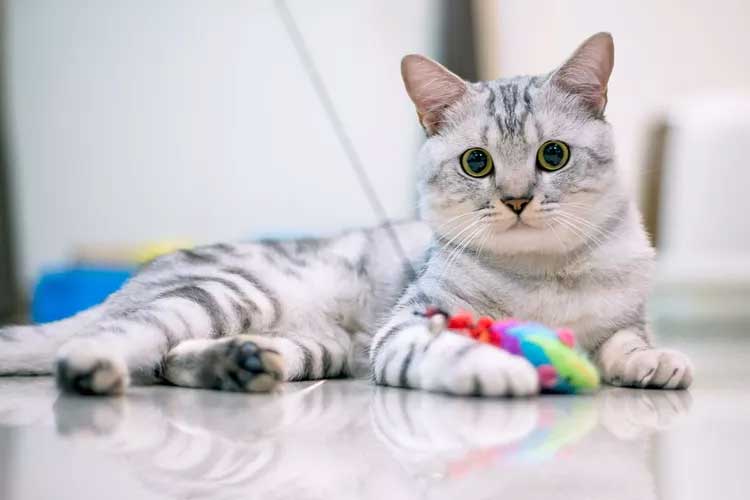
She suggests regular grooming for your cat. "If you maintain your cat's coat, it's a lot more pleasant for the cat," she says.
Like with all cats, it's important to keep your American shorthair's nails trimmed and keep his litter box clean. Regular dental care is also recommended.
Health
With generations of working cats in his ancestry, the American shorthair has evolved to be a rugged, healthy breed.An American shorthair's lifespan can be anywhere from 15–20 years and they don't really have a ton of breed-specific health issues. Still, there are some concerns pet parents should watch out for.
"A form of heart disease, hypertrophic cardiomyopathy, which is the most common heart disease in cats and causes the heart muscle to abnormally thicken, can affect American shorthair cats," Gerken says. "American shorthair cats who will be bred should be screened for this disease."
Gerken says shorthairs can also be prone to obesity. Consult your veterinarian about how much and how frequently you should be feeding your kitty.
With regular vaccinations and checkups at the vet, an American shorthair will remain healthy and happy. Of course, like other breeds, the American shorthair should always be spayed or neutered and kept indoors at all times. If you do take him outside, make sure he's safe on a harness or inside a secure catio.
History
If the Daughters of the Revolution had a feline counterpart, the American shorthair would be on the top of the list—like the pilgrims, they arrived in North America on the Mayflower. Bred for their rat-killing prowess, this breed quickly spread across the country, where they were tasked with ridding homes and businesses from vermin, Gerken says.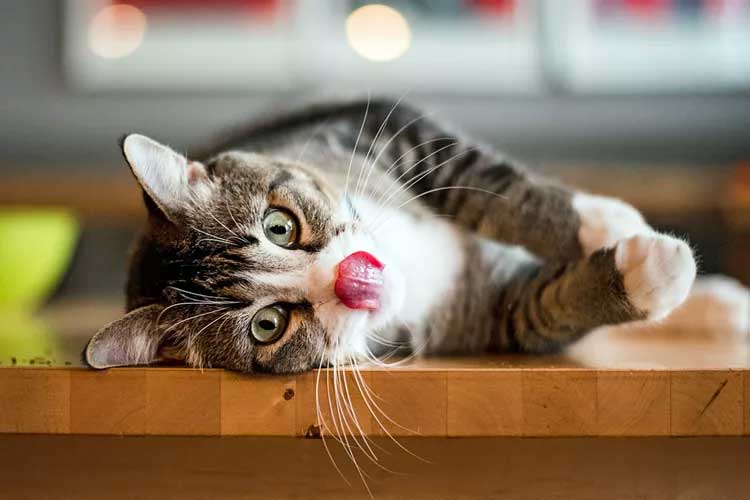
By the 1890s, American shorthairs had developed such a following they were first shown at the first national cat show in Madison Square Garden in 1895. By 1906, they were one of the first breeds recognized by the Cat Fanciers Association (CFA). Today, they're one of the most popular cat breeds in the country.
Fun Facts
Writer Mark Twain was a huge cat fan and owned a number of animals that in vintage photos look a lot like today's American shorthair. He once said, "If a man could be crossed with a cat, it would improve the man, but deteriorate the cat."The image of an American shorthair has appeared in a wide variety of advertising campaigns, including the Royal Canin cat food line and even the board game Cat-opoly.
These kitties weren't dubbed "the American shorthair" until 1906.